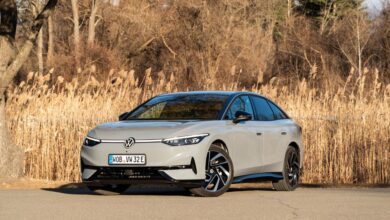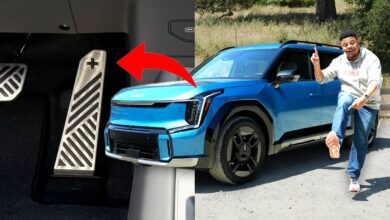What a Tesla ‘Seagull’ Might Cost, and Where It Would Sell

The threat of cheap Chinese cars has Washington, and investors, atwitter. There isn’t anything magical about China’s ability to produce low-price cars.
could do the same. It won’t though because few people want them.
cut the price of its small Seagull electric vehicle for the Chinese market to $10,000 earlier this year. The move appears to have created endless PR for the auto maker with pundits and auto reviewers wondering what cheap cars mean for the U.S. industry. The Seagull might even be part of the reason President Biden recently quadrupled tariffs on Chinese car imports to 100%.
The $10,000 sticker price is a shock. In China, a Tesla Model Y starts at about $35,000. So is that game over for Tesla’s EV leadership? No, of course not.
The Y is about 50% bigger than a Seagull, so taking all the steel, plastic, copper, and other parts out of the Y to make an equivalent-sized car removes roughly $10,000. The Y has a much-bigger battery pack and more powerful electric motor—needed partly because it’s a bigger luxury car. Resizing both removes another $6,000. The difference in per-car profits amounts to another few thousand dollars.
A Telsa version of the Seagull could easily start as low as $14,000. That’s still a little more expensive than the actual Seagull, as BYD makes its own batteries in China, and Tesla uses a third-party supplier. That’s one difference in the local cost structures.
Advertisement – Scroll to Continue
Then there is “borrowed R&D” as one analyst put it. Chinese car makers relied on Western automotive technology for years. That cut some of the money needed by Chinese companies to develop their vehicle platforms. That, and government subsidies, are other hard-to-quantify benefits for Chinese producers that help with costs.
Still, with a Tesla Seagull, the extra money buys better seats, a front trunk, two wipers, and more sound insulation. Tesla can compete in any segment of the auto market.
The company once didn’t think it needed to, but that’s recently changed. Tesla recently decided to accelerate the development of a smaller EV amid slowing demand growth for all EVs. The smaller Tesla could be on sale as soon as early 2025.
Part of the reason Tesla slow-played the smaller car was its own success. The Model Y is still the best-selling EV in China. There, it costs about $10,000 less than a Model Y in the U.S. Labor costs, which also impact regional parts sourcing, are reasons. Different safety standards between the U.S. and China are another.
Advertisement – Scroll to Continue
BYD sells the Seagull in Brazil and Mexico. It’s called the Dolphin Mini in those markets. The car starts at over $20,000 in both places.
A $10,000 Chinese car isn’t a $10,000 American car. That should soothe nervous investors to some extent. There is another reason Tesla, and the U.S. industry, won’t get crushed by cheap Chinese cars. “A [Pinto] is not something people want anymore,” says BofA Securities analyst John Murphy. The market, for the most part, decides what people want.
Americans don’t really buy ultracheap, small cars. The 10 cheapest cars in the U.S. cost an average of about $21,000. They captured about 6% of the U.S. market in 2023. The market for the cheapest cars is only a little larger than the market for more-expensive luxury cars.
Advertisement – Scroll to Continue
At $21,000, a new cheap car in the U.S. is equivalent to about 35% of median U.S. wages. It’s equivalent to about 25% of median household income.
Comparable numbers are hard to find, but at $10,000 the Seagull would represent about 50% of a factory worker’s annual wage in China. In one respect, China has cheaper cars because the market demands them.
The story is similar in Europe. The average car in Germany costs about $46,000, similar to the U.S. That’s equivalent to about 75% of average wages. Again, similar to the U.S. That’s the average car price, though. There are cars for sale in Germany that start below $20,000.
Advertisement – Scroll to Continue
To be sure, there are local differences in every car market. Americans love full-size trucks and driving long distances more than others.
Americans are focused more on car costs these days because of recent inflation. The average car price in the U.S. is about $10,000 higher than prepandemic levels, while wages are up about $8,500 over the same span. Interest rates are also up, adding hundreds of dollars a month to car payments made on the same car.
For April, the Cox Automotive’s Affordability Index, which accounts for prices, rates, and incomes, came in at 37.7, down from peak levels of about 41, but up from prepandemic levels of about 34. The inflationary-car-buying-pain is about half as bad as it was.
Americans would like a better deal on new cars. That doesn’t mean that they will pile into a tiny car, however. That just isn’t what the market calls for.
Write to Al Root at allen.root@dowjones.com



